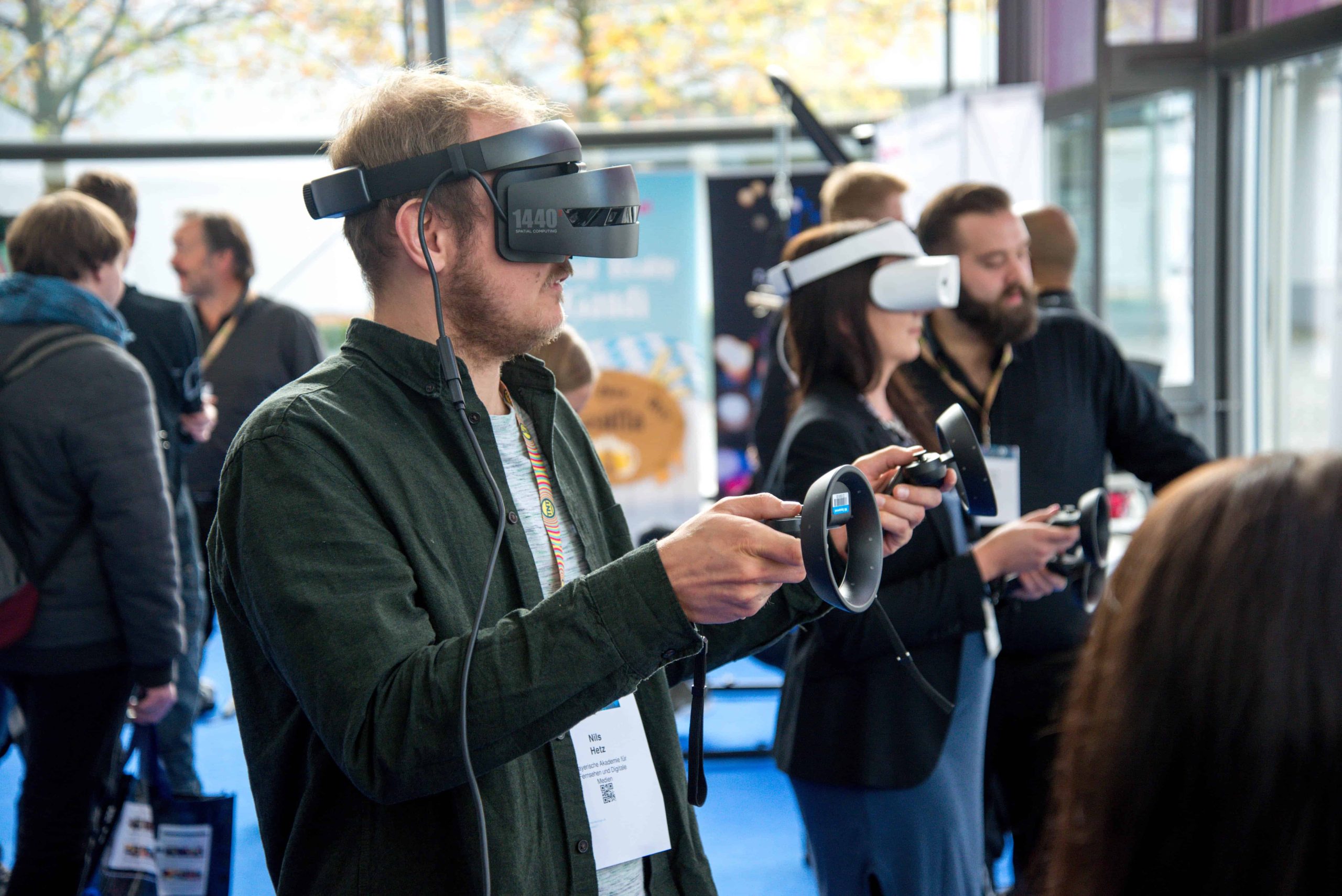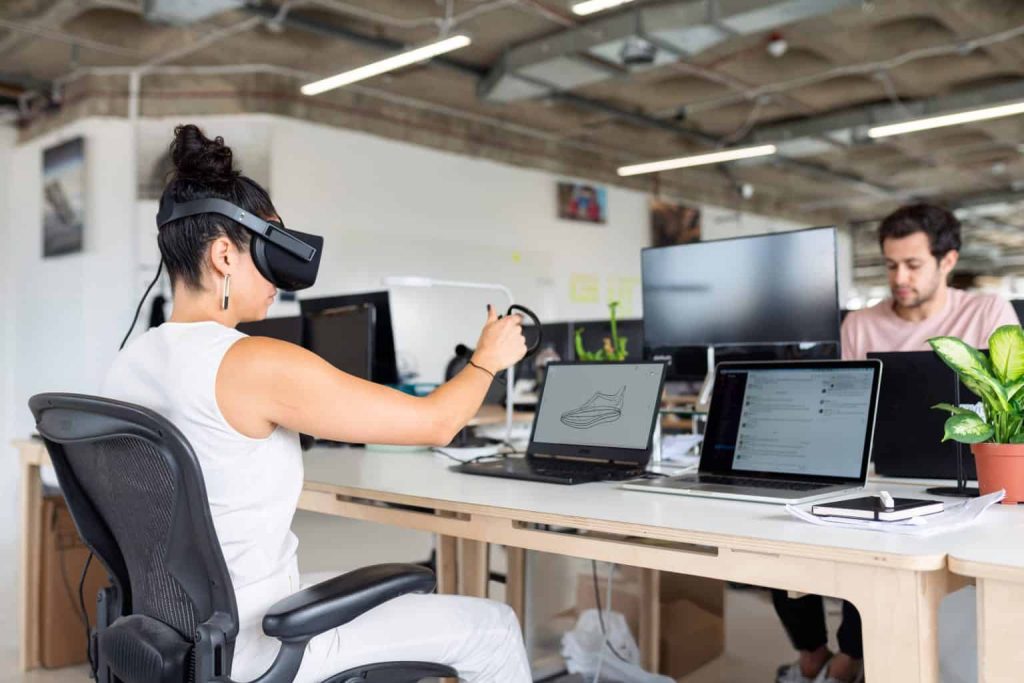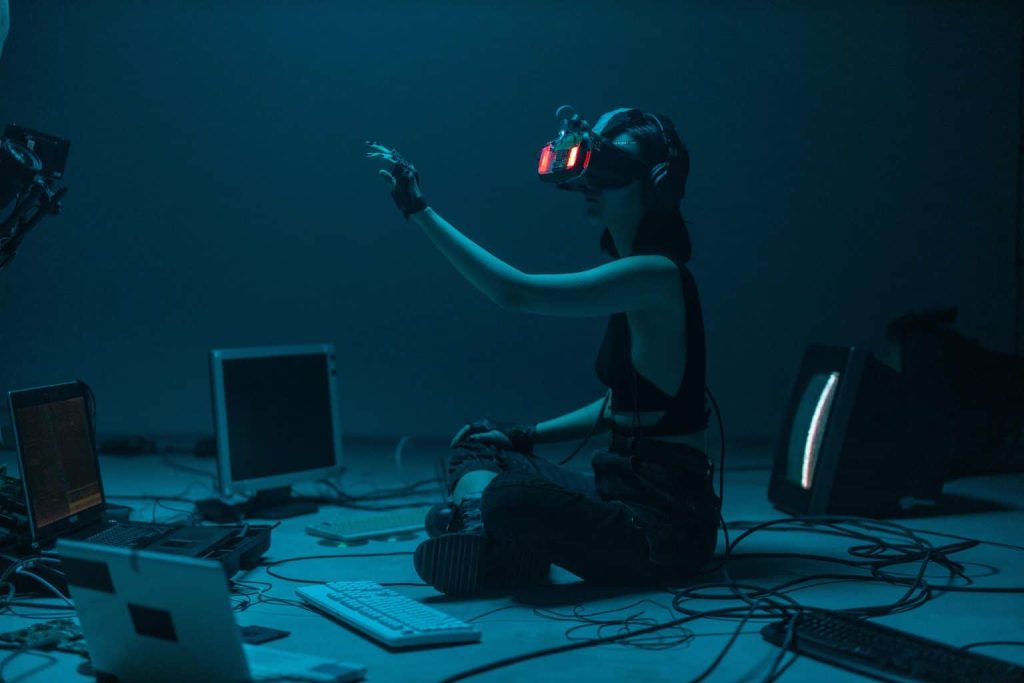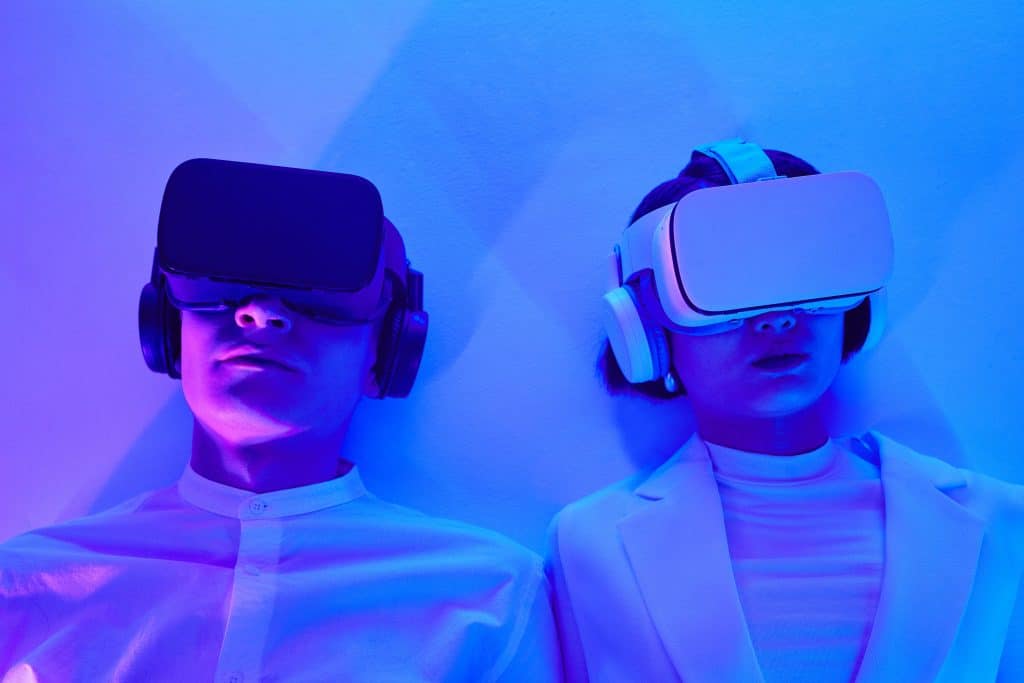
26 Jan Best Technologies for Virtual Art Tours in 2024
The intersection of art and technology has paved the way for a revolutionary way of engaging with artistic masterpieces, transcending the limitations of physical proximity and providing a global audience with unprecedented opportunities for cultural enrichment. As technology continues its rapid evolution, the possibilities for enhancing and expanding virtual art tours seem boundless. From the inception of basic virtual galleries to the current state-of-the-art immersive environments, we will dissect three generations of advancements that have redefined the way we perceive, appreciate, and interact with art in the digital realm. By examining these technological strides, we aim to gain insight into the dynamic landscape where creativity and innovation converge to reshape the future of art exploration.
Top Technologies

Photo by ThisIsEngineering
360° Photography and Videography
Using cutting-edge cameras like the Ricoh Theta and Insta360 One X2 has become essential in the field of 360° photography and videography in order to capture panoramic vistas that transform the virtual art experience. These advanced gadgets are excellent at producing sharp images with a wide field of vision, enabling viewers to explore all the details of displays. Because these panoramic views are immersive, they improve the entire exploration experience by allowing viewers to virtually navigate across art venues and appreciate the context and intricacies of each exhibit. It makes looking at art a dynamic, all-encompassing experience.
Matterport cameras are essential for interactive navigation in virtual art exhibits, adding even another level of immersion to the virtual experience. These cameras improve the way viewers engage with the virtual area by introducing interactive components and facilitating smooth transitions between displays. By using Matterport technology, the virtual tour is made more engaging and user-friendly while also guaranteeing seamless navigation. When cameras like Ricoh Theta, Insta360 One X2, and Matterport work together, they create a singular and enthralling virtual art experience that invites visitors to go through breathtaking exhibitions on a visually rich trip and explore the worlds of art in a way that has never been seen before.
Virtual Reality (VR)
Within the field of Virtual Reality (VR), the incorporation of state-of-the-art headsets like the HTC Vive Pro 2 and Oculus Quest 2 has completely transformed how people interact with art. These VR headsets immerse users in incredibly realistic virtual surroundings, providing experiences that are unmatched in terms of immersion. Users are able to study art exhibits in ways that go beyond typical viewing because to the inclusion of spatial audio, which further increases the sensation of presence. Wearing virtual reality (VR) headsets, users are immersed in a digital universe where the lines between the actual and virtual worlds are blurred, creating a strong bond with the creative setting.
However, the adoption of VR technology comes with a requirement for technical expertise, as users need to navigate dedicated headsets and associated technologies. This demand for a certain level of proficiency might initially pose a challenge for some users. Nevertheless, the technical investment pays off by offering an unparalleled and highly realistic encounter with art. By donning VR headsets such as Oculus Quest 2, HTC Vive Pro 2, or PlayStation VR2, individuals gain access to a gateway that transcends the confines of traditional viewing, allowing them to embark on a virtual art adventure that is both immersive and transformative.
Augmented Reality (AR)
Augmented Reality (AR) applications, such as the Google Arts & Culture app and Snapchat Lens Studio, have introduced a transformative dimension to art exploration by overlaying information and interactive elements onto real-world environments. This information overlay serves to enrich the viewing experience, providing users with additional context, historical insights, and interactive features related to the artworks they encounter. The integration of AR technologies into these applications adds a layer of depth to art appreciation, allowing users to engage with artworks in a more dynamic and informative manner.
AR technology doesn’t confine itself solely to the digital realm; it extends its impact to physical museum visits as well. By adding extra layers of information or even creating AR-only art experiences, AR enhances the museum-going experience for visitors. This blending of the virtual and physical worlds creates a harmonious and enriched environment where digital elements seamlessly interact with physical exhibits. Visitors find themselves immersed in a blended reality, where the boundaries between the tangible and the digital dissolve, offering a truly unique and enhanced museum exploration.
Examples of these augmented reality experiences can be found in applications like the Google Arts & Culture app, Snapchat Lens Studio, and Artivive, each providing distinct ways to blend the virtual and physical art worlds. These applications serve as portals for users to immerse themselves in a dynamic and enriched art experience that goes beyond traditional modes of engagement.
3D Modeling and Scanning
Technological developments in 3D modeling and scanning, made possible by programs like Agisoft Metashape and Autodesk Maya, have completely changed how art is shown and preserved. These techniques open up new possibilities for digitizing and exhibiting artwork by allowing the production of virtual duplicates of whole galleries as well as individual works of art. This capacity is crucial to guaranteeing that art is accessible to a wider audience that is not limited by space or time. The digital domain is transformed into a dynamic platform for the distribution and conservation of artistic works by means of virtual reproductions.
Moreover, 3D modeling offers a unique opportunity for detailed exploration of artworks. Utilizing software such as Agisoft Metashape, Autodesk Maya, and ZBrush, viewers can delve into a close-up examination of artistic masterpieces. This technology allows users to virtually inspect every intricate detail, offering a level of exploration and appreciation that may be challenging to achieve in a traditional setting. The tools provided by these software applications empower art enthusiasts and scholars alike to gain a deeper understanding of the artistic nuances embedded in each piece, fostering a more immersive and educational experience.
Interactive Storytelling and Gamification
Platforms like CoSpaces Edu, ThingLink, and the Quest VR app “Vermillion” are transforming the virtual art experience in the field of interactive storytelling and gamification by including challenges, quizzes, and narrative components. Through the rich layer of narrative these platforms offer, art study becomes more dynamic and participatory for spectators. The addition of narrative components makes the virtual art experience more interactive and enables viewers to engage with artworks more deeply as they work through interesting tasks, quizzes, and stories. Beyond merely enhancing art appreciation, these technologies facilitate interactive learning experiences. Viewers using platforms like CoSpaces Edu and ThingLink can delve into the stories behind artworks, participate in quizzes, and face challenges that not only entertain but also educate. This blend of entertainment and education transforms the traditional art exploration paradigm, making it more accessible and engaging for a diverse audience. The narrative-rich Quest VR app “Vermillion” and similar platforms exemplify how interactive storytelling and gamification can turn art exploration into an immersive and educational adventure, unlocking new dimensions of understanding and appreciation for the artistic journey.
Key Takeaways
Technology | Key Advantages |
360° Photography and Videography | High-quality panoramic views and interactivity |
Virtual Reality (VR) | Unparalleled immersion with spatial audio |
Augmented Reality (AR) | Overlaying information onto real-world environments |
3D Modeling and Scanning | Virtual replicas for detailed exploration |
Interactive Storytelling and Gamification | Engaging viewers through narrative elements |
Considerations and Challenges

Photo by cottonbro studio
Accessibility and Inclusivity
It is important to prioritize diversity and accessibility in the context of virtual art exhibitions. It entails adjusting the experience to fit users with different devices and skill levels. It is ensured that people with impairments may completely participate in and appreciate the creative experience by implementing features like keyboard navigation, screen reader compatibility, and alternate formats for material. Moreover, taking into account the wide variety of devices that users utilize to access virtual tours, making the platform as functionally flexible as possible across screen sizes, resolutions, and input methods makes the experience more inclusive.
Data Storage and Bandwidth
The quality of a virtual art tour heavily relies on the underlying technical infrastructure, particularly in terms of data storage and bandwidth. Robust data storage is essential for storing high-resolution images, 3D models, and other multimedia content that enrich the tour experience. Additionally, sufficient bandwidth is crucial to enable smooth streaming and prevent interruptions that could disrupt the flow of the virtual tour. Investing in scalable and efficient storage solutions, along with a network infrastructure capable of handling large volumes of data transfer, ensures that users can enjoy a seamless and immersive art exploration without compromising on visual or interactive quality.
Balancing Interactivity
Creating an engaging virtual art tour involves striking a delicate balance between interactivity, preservation of artworks, and adhering to established museum etiquette. On one hand, interactivity adds depth to the experience, allowing users to explore artworks in a more dynamic and personalized manner. On the other hand, preserving the integrity of the artworks, whether through controlled viewing angles or limited interaction, is crucial to maintain the historical and cultural significance of the pieces. Striking this balance requires careful consideration of user expectations, the educational aspect of the tour, and the need to respect the artistic intent behind each piece. Navigating these challenges ensures that virtual art tours remain enjoyable, educational, and respectful of the artworks and their context.
Future Trends and Innovations

Photo by Pavel Danilyuk
AI in Personalized Experiences
The infusion of artificial intelligence (AI) into virtual art experiences marks a significant advancement in tailoring engagements to individual preferences. Leveraging AI algorithms enables the system to analyze user behavior, preferences, and historical interactions. By understanding these patterns, the virtual art tour or guide can adapt and customize the content, offering a more personalized and enjoyable experience. Whether it’s suggesting specific artworks based on past preferences, adjusting the pace of the tour, or providing additional information tailored to the user’s interests, AI enhances the overall immersion and relevance of virtual art exploration.
Haptic Feedback Technology
In the pursuit of a more immersive virtual art experience, the integration of haptic feedback technology emerges as a groundbreaking innovation. This technology aims to transcend the visual and auditory dimensions by introducing a tactile element. Users can experience a simulated sense of touch, feeling the textures and surfaces depicted in the virtual artworks. This not only adds a new layer of sensory engagement but also bridges the gap between the digital and physical realms. As users virtually interact with sculptures, paintings, or other artworks, haptic feedback technology enriches the experience by providing a more tangible and multisensory connection, enhancing the overall sense of presence and realism.
Blockchain Integration
The application of blockchain technology in the realm of virtual art spaces addresses the critical issue of securing the verification and ownership of digital art. Blockchain’s decentralized and tamper-resistant nature ensures a transparent and unalterable record of transactions related to digital artworks. This is particularly crucial in establishing provenance and confirming the authenticity of virtual art pieces. By integrating blockchain into virtual art platforms, artists, collectors, and audiences can have confidence in the legitimacy and ownership of digital artworks. This technology not only safeguards the value and integrity of digital art but also opens up new possibilities for establishing a secure and transparent art market in the virtual space.

Photo by Michelangelo Buonarroti
Conclusion
From the panoramic vistas captured through 360° photography to the lifelike immersion of Virtual Reality (VR) and the informative overlays of Augmented Reality (AR), each advancement enhances the richness of the virtual art tour experience. Despite these strides, challenges persist in ensuring accessibility, data storage, and striking the right balance between interactivity and art preservation. Looking ahead, the future promises exciting trends and innovations in virtual art exploration. The integration of Artificial Intelligence (AI) offers personalized art experiences, haptic feedback technology adds a tactile dimension to virtual exploration; and blockchain secures the verification and ownership of digital art. As technology and creativity continue to converge, the dynamic landscape of virtual art tours presents a promising and inclusive future for art enthusiasts globally.
FAQs
Are virtual art tours accessible to users with disabilities?
Virtual art tours are increasingly being designed with accessibility in mind, recognizing the importance of making them inclusive for users with disabilities. Efforts are underway to implement features such as audio descriptions, captions, and alternative navigation methods to accommodate individuals with varying abilities. This ensures that the virtual art experience is not only visually engaging but also accessible to a broader audience.
How much technical expertise is needed for VR experiences?
Regarding technical expertise for VR experiences, a certain level of proficiency is typically required as these experiences often rely on dedicated VR headsets. Users need to be familiar with the setup, calibration, and operation of these devices, which may pose a barrier for individuals with limited technical knowledge. As technology advances, efforts are being made to simplify VR interfaces, making them more user-friendly and accessible to a wider audience.
What challenges do virtual art tours face in terms of data storage?
In terms of data storage challenges for virtual art tours, maintaining a seamless and high-quality experience demands robust data storage infrastructure. The visual richness of virtual art environments requires efficient streaming capabilities and sufficient bandwidth to prevent interruptions or lag. Addressing these challenges is crucial to delivering a smooth and immersive virtual art tour experience for users around the world.
How does blockchain technology contribute to virtual art tours?
Blockchain technology is making significant contributions to virtual art tours by enhancing the security and authenticity of digital art in virtual spaces. By utilizing blockchain, virtual art platforms can establish a decentralized and tamper-proof system for verifying the ownership and provenance of digital artworks. This not only protects the rights of artists but also instills confidence in collectors and enthusiasts participating in the virtual art ecosystem. The transparent and traceable nature of blockchain ensures a trustworthy foundation for the burgeoning field of digital art within virtual environments.
Trace “The History of Art Exhibitions”, unraveling their transformative impact on the traditional paradigms of art display, as these virtual spaces redefine accessibility, interactivity, and the immersive experience, shaping a new era in the way art is showcased and experienced.

